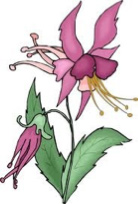Now, just about everyone I talk to this Winter, or rather since somewhere after Thanksgiving, has been looking for Winter to end; even before it was technically here.
The snowfall in Northern and even Southern New Jersey has seemed to be adverse this year. However, after talking to my friend Sam, from Empire, Michigan (former rock drummer), I don’t feel like our snowfall record has been too bad. He reported some 150” of snowfall, about twice our amount, covering the house windows.
Anyhow, how shall we look forward to Spring? I like to think about what I can offer my customers that will be new and fun. I also like to think about my garden plant collection, and what I can enhance and embellish. I get my inspiration from visiting greenhouses and Botanical Gardens in the Winter months. Visiting the National Arboretum in Washington DC has inspired me to re-activate my Garden Railway layout. More on that in a future article.
And I am thinking about the critters who love to browse, and devour our gardens, which leads me to the topics of Wildflowers, and Native Plant material. About 25 years ago, the term “Xeriscaping” became a buzz-word , quickly forgotten, all but by people more concerned with things like water conservation.
Benefits: let’s look at them.
Water conservation – Native plants and wildflowers can both save water expense, and help us feel better, about contributing in a personal way towards the environment, by the need to water less. All it takes is a good drought (most of California), and we all start thinking water conservation until the first rainfall, then it is forgotten. Most customers that I speak to do not realize that we had a very dry autumn, and only recall the wet June of 2013. Xeriscaping can also be taken to a local “extreme” (pretend you are designing for Arizona), yes, I can expand on that in another article.
Chemical applications – Are much diminished, and necessary, and we can also use more organic matter and products to achieve our gardening goals, in addition to contributing to a less polluted environment. No need to crank those babies full of “Miracle-Gro”; another feel-good situation.
Sweat Equity – All right, say we have planted the shrub and tree beds with native woody ornamentals, and it’s time to design with the wildflowers. Commonly, a good portion, or up to all of the lawn can be replaced with the wildflower aspect of the planting. Personally, I would rather pick flowers for my vases, than mow the lawn; how about you? By eliminating the lawn, we can reduce property maintenance costs also, and give ourselves the benefits of seasonal fresh cut (perhaps dried) flowers.
Bee awareness and pollination – Recently, in the environmental side of the news, the “save the Bees” blogs and petitions are gaining popularity; why? Because smart people are realizing that 1/3 of our food supply has to do with the Bees being able to do their job in nature. If we cut back (like we have been), on bio-diversity, the eco-system is affected. To paraphrase Einstein, “once the Bees are gone, we are gone”. In addition, we need to realize that there are pollinating insects that perform one pollination function to one type of plant per year, only to go dormant afterwards, until the next season. The whole eco-system needs to be complimented; the birds need insects to eat, also.
In closing, I have to advise that changing a property to a native and wildflower culture usually takes 3-5 years to transform fully. This may seem like a long time, but when I plant perennial gardens for my clients, I advise them that a three-year timeline is generally the rule for many perennials to mature.
Thanks for paying attention, and I hope that I have possibly inspired some readers to think a little differently about how they view their property, and perhaps can change towards a more bio-diverse home and Commercial landscape eco-system.
Written By: Everett Fink
Edited By: Elysse Fink
Everett Fink is a Certified Rutgers Master Gardener, Certified Pesticide applicator, and N.J. State licensed Home Improvement Contractor. Everett was designated Top Tier Designer at Sponzilli Landscape, and currently Owns Property Details LLC, in New Jersey.






































